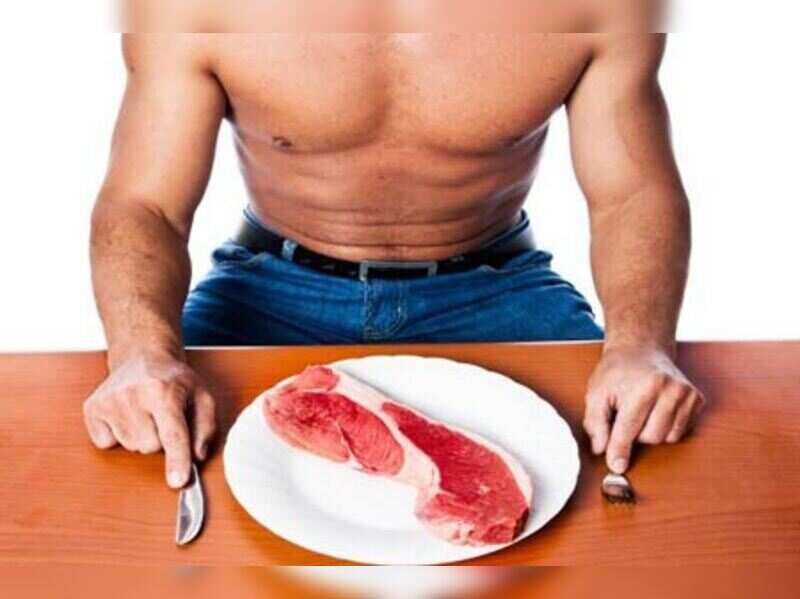
You can’t build bigger muscles in a few days. Build your exercise program and meal planning around your goal of increasing your body’s muscle mass. Learn how to approach the process of proper muscle building with the helpful advice of the following article. Incorporate the tips, you’re about to learn, into your exercise routines for results you can see.
It is important to incorporate a sufficient amount of vegetables into your diet. While diets focused on increasing muscle tend to focus on carbohydrates and protein, they forget about vegetables. There are a number of vitamins and nutrients in vegetables that simply can’t be found in high-protein or carbohydrate-rich foods. Further, they are wonderful sources of fiber. Getting enough fiber means your body will assimilate proteins efficiently.
Neither speed NOR weight is more important than technique! Form and technique are extremely important in muscle building and it is always better to go slow and focus on form, rather than speeding through a workout. Pace yourself and keep correct form throughout your workout.
Keep in mind the three most important exercises, and always include them into your workout program. The muscle-building power of these exercises – the dead lift, the bench press and the squat – is well-established and indisputable. These will not only add some bulk to your body, but they will also help to condition you as well as improve your strength. You should aim to include these exercises in some manner regularly.
Lean Proteins
Consume lots of protein when you wish to build muscle. Protein is an essential building block and is the main component of muscles. When your body lacks the protein it needs to effectively build muscle, you will have much less success in achieving the muscle mass and physique you seek. You should try to eat lean proteins at least 4 times, but preferably five times each day. Two of your meals and two of your snacks should contain lean proteins, with an extra serving of it in a third meal when possible.
Switch up your workout routine. Your muscles will soon get accustomed to your workouts and you will cease to see positive results. Change your workout to do a variety of exercises, and alternate the muscle groups you work on in a single setting. A new workout will help you stay motivated and enjoy exercising.
Try to create a body that looks bigger than your body may actually be. That will happen if you focus efforts on the upper back, shoulders and upper chest and train those body parts specifically. Bulking up this way makes your waist look smaller, and it can make you look larger overall.
Hydration has a huge impact on muscle building. Failing to maintain proper hydration leaves you susceptible to injury. Also, hydration is vital to boosting and keeping muscle mass, so it’s crucial that you drink enough water.
When you are building muscle, you have to increase your daily calories to offset the increased activity. Plenty of health sites offer free calorie calculators to help you decide how many calories you need to be consuming. Try using these tools and changing the way you eat to include a balance of nutrients to help you build muscle.
Learn to find your limit, but do not stop an exercise until you have used all your resources. Every time you do a set, don’t give up until you are totally exhausted and can’t lift the weight even one more time. If you must, lower your set length.
Plyometric Exercises
Add a couple plyometric exercises to your routine. This work smaller, “fast-twitch” muscle fibers, stimulating muscle growth. Similar to ballistic moves, plyometric exercises require you to accelerate your movements. For example, if you were doing plyometric push-ups, you would propel your body upward by removing your hands from the floor as you complete the movement.
A problem that can hamper muscle building is that some muscle groups grow slower than others. Fill sets are necessary to pay attention to each muscle group necessary. This is a set of exercises used in targeting the muscles in question, performed 2 or 3 days after working on the same area.
It is necessary to monitor your calories, if you want to build muscle. Keep in mind that some calories will benefit you more than others, and nutrition is very important if you want to develop a body that is strong and lean. At an extreme, a bad diet will lead to more fat instead of muscle.
Adjust your diet to make sure you are getting what your muscles need. To build muscles, you will need a good protein intake and less fat. Muscle building is not a free pass to eating more; you still need a balanced diet. A daily multivitamin, combined with protein supplements, will make it easier to bulk up.
You do not need to build yourself up into a mountain of muscle to realize the significant benefits of better muscular development. It can boost your self-esteem, make you stronger, better your joints, and improve your lung function when you do light or medium cardio routines.
Always stretch before you start a workout. Stretching helps to warm-up your muscles, which prevents injuries. Stretching after a workout helps your muscles enter recovery phase, building up more new muscle tissue. Deep tissue massage is also an effective way for you to relax post-exercise tension in your muscles.
The article above has some powerful information for you to use now in creating an effective muscle building routine. Now you know what it takes and how to go about increasing your muscle mass and your strength. Remain dedicated to see great results quickly!